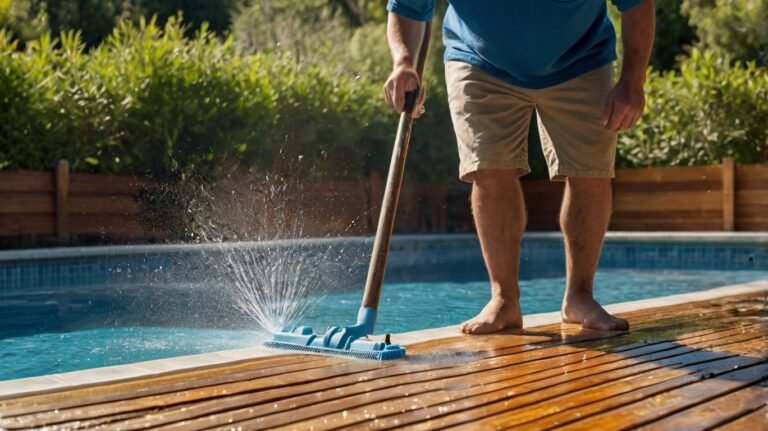Exposed aggregate is a mixer of sand, tiny pebbles, and cement. It is a popular choice for outdoor surfaces such as driveways, patios, and pool decks due to its durability and aesthetic appeal. This mixture is poured and then the top layer of cement is removed to reveal the aggregates, creating a textured and unique surface.
Is Exposed Aggregate Concrete Good Around A Pool?
There is no doubt that swimming pool decks are a popular spot for families and friends to gather and enjoy the outdoors. However, with constant exposure to water, chlorine, and other pool chemicals, it is important to choose a durable and long-lasting material for your pool deck. You can trust exposed aggregate to not only provide a beautiful and unique surface, but also withstand the harsh conditions of a pool environment.
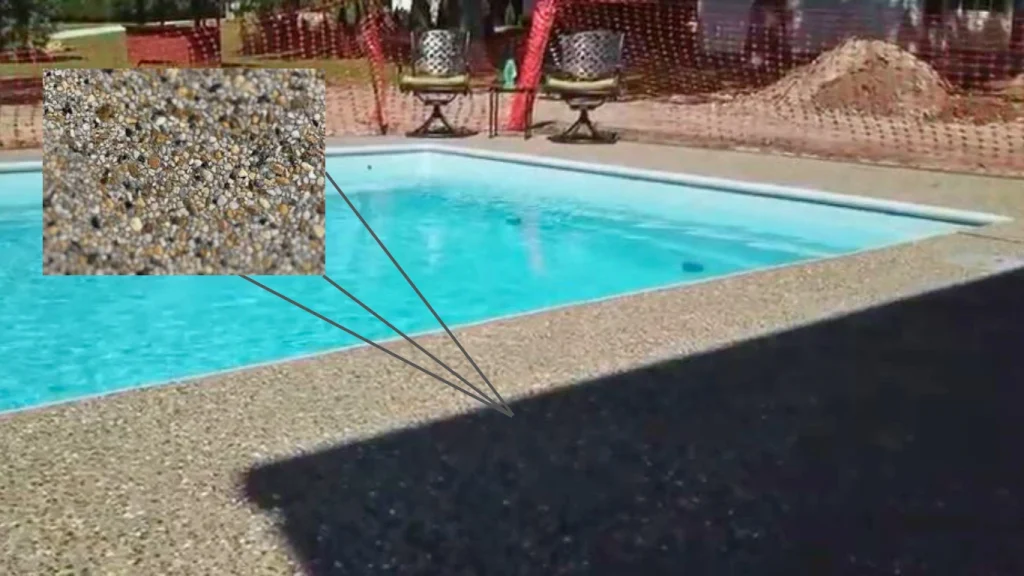
Pros & Cons:
Exposed Aggregate Concrete generates a natural textured effect by exposing the aggregate, or small stones, present in the concrete mix. Many pool owners choose this material for their pool decks as it offers several benefits.
Pros:
- Slip-resistant: Exposed aggregate concrete is an ideal material for poolside areas due to its natural slip-resistant texture, making it safe for wet use. The embedded aggregate stones add texture and grip to the surface, enhancing the material’s strength and durability.
- Durable: It holds up against heavy use and wear and tear, making it an ideal choice for poolside areas. It is also UV-resistant, ensuring that its color won’t fade over time.
- Customizable: It can be customized to match any home’s style, thanks to the variety of aggregate stones available in different colors and textures. The most common ones include:
- Gravel
- Crushed Stone
- Basalts Black
- Quartzite
- Crushed Glass
- Low Maintenance: It requires minimal upkeep compared to other poolside materials. Regular brushing, washing, and occasional sealing are sufficient to maintain it.
- Slip-resistant: The textured surface of exposed aggregate provides excellent grip, making it safe to walk on even when wet. This is especially important for areas around swimming pools where water can easily accumulate.
- Lifespan: When properly installed and maintained, exposed aggregate can last for 17 to 20 years without showing signs of wear and tear. This makes it a cost-effective option in the long run.
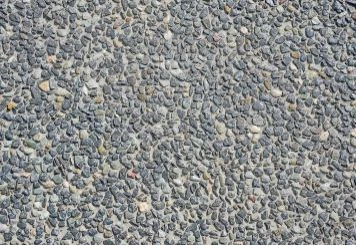

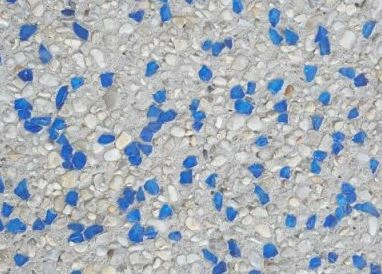
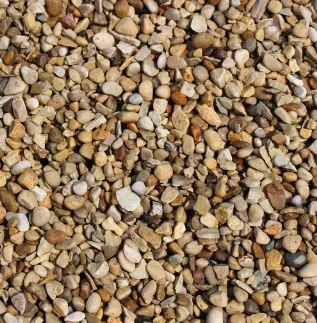
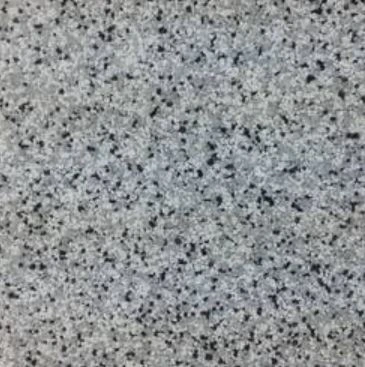
Cons:
- Uncomfortable Surface: It can be uncomfortable to walk on for long periods due to the small aggregate stones embedded in the concrete. It may cause pain if walked on for extended periods.
- Higher Cost: Although Exposed aggregate concrete is generally more expensive than traditional concrete, its durability and low-maintenance benefits make it a worthwhile investment in the long run.
- Difficult to Repair: Repairing exposed aggregate Concrete can be challenging, requiring specialized tools and knowledge, making it best left to professionals. In some cases, replacing the entire concrete slab may be necessary to fix any damage.
- Vulnerable to Staining: Exposed aggregate concrete is more vulnerable to staining than traditional concrete due to its porous nature. The open surface of the aggregate allows liquids and moisture to penetrate the concrete, making it susceptible to staining from oil, grease, food, and other liquids commonly found in outdoor environments. Removing stains from Exposed Aggregate Concrete may require specialized cleaning products and techniques.
| Pros | Cons |
|---|---|
| Slip-resistant surface (reduces slips when wet) | Rough texture (uncomfortable for bare feet) |
| Durable (withstands weather and heavy use) | Requires periodic sealing (every 2–3 years) |
| Customizable aesthetics (variety of colors/sizes) | Skilled installation needed (higher upfront cost) |
| Cooler surface (with light-colored aggregates) | Heat retention (dark aggregates get hot) |
| Low maintenance (vs. wood/pavers) | Repairs are challenging (hard to patch seamlessly) |
| Good drainage (minimizes puddles) | Traps debris/algae (needs frequent cleaning) |
| Cost-effective (mid-range pricing) | Sensitive to pool chemicals (chlorine/saltwater degrade sealant) |
| Long-term wear (risk of loose aggregates in freeze-thaw cycles) |
Remarks:
Exposed aggregate concrete can transform the look of any outdoor space, providing a unique and visually appealing finish. However, it’s important to be aware that this type of concrete is more susceptible to staining compared to traditional concrete. This is because the exposed aggregate surface has open pores that can easily absorb liquids and moisture.
When exposed aggregate surfaces are not properly sealed or maintained, they can easily become stained by substances such as oil, grease, food, and other common outdoor spills. These stains can be difficult to remove from the porous surface of the concrete without using specialized cleaning products and techniques.



